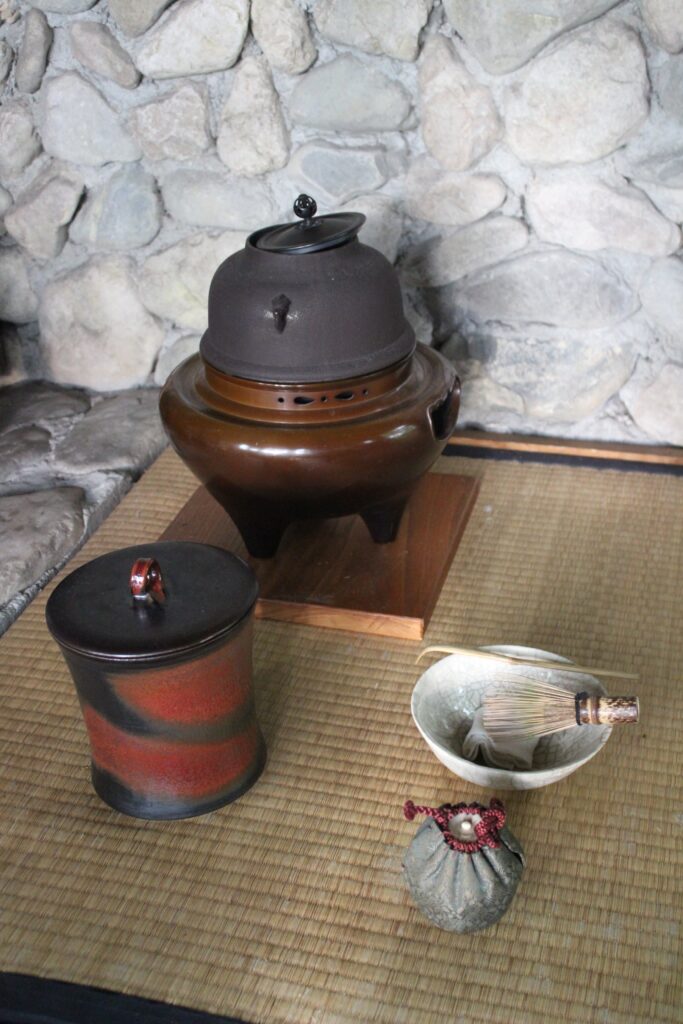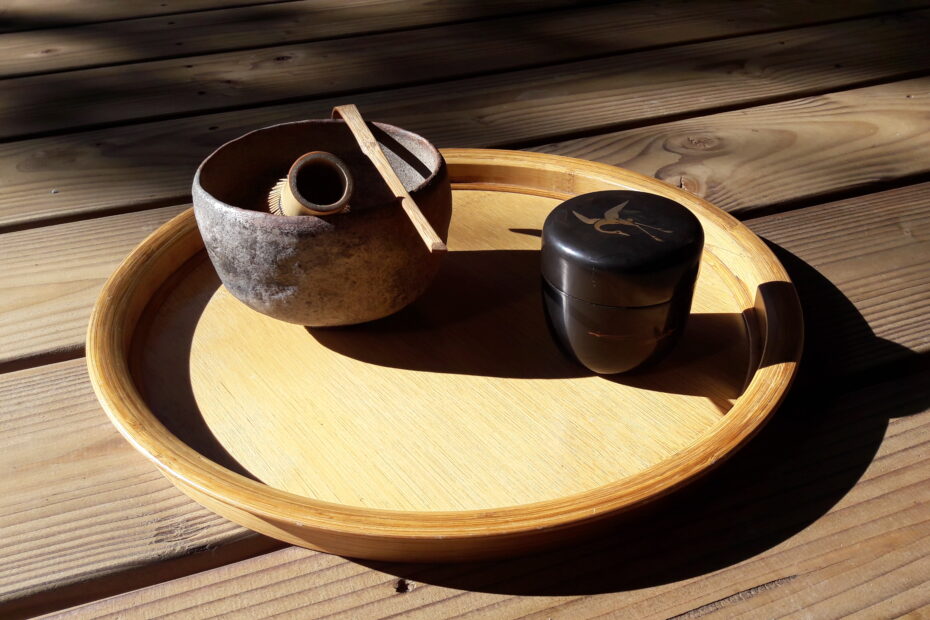
Right from the start, the Zen practitioner is confronted with the mental hyperactivity that’s characteristic of most contemporary westerners. Buddhism provides the image of our mind being like a bottle filled with sand and water in continuous agitation. The first step of any meditation practice—tranquility of mind—therefore involves, in keeping with the image, simply putting the bottle down and waiting patiently for the sand to settle so the clearness of the water can become apparent.
To progressively remove the mental and emotional veils that obscure our perception of reality, plunging into the sensorial mode is an important aspect of the path indicated by Zen.
The novelty and rigor of the posture of sitting meditation forces the practitioner to return to their body sensations whilst at the same time avoiding seizing them, that is, avoiding the continuous temptation to comment on these sensations.
Similarly, the path indicated by the tea ceremony is sensorial. It’s a multitude of rich sensorial invocations in the context of pared down spaces and slow gestures, which naturally allow the guests to let go of mental activity.
The tea ceremony therefore provides the opportunity for people who find meditation difficult to experience tranquility of mind in a simple and immediate way.
This is possible because the tea ceremony provides a sensorial experience that is both reduced to the minimum and rich in contrasts. The practice continuously solicits our senses. Through what we see, hear, touch, taste and smell… all the senses are solicited. Without effort, the mind lets go of its activity because its presence and attention are shifted to the sensorial level. That’s the essential element that lets guests naturally plunge into the world of feelings and to experience a meditative state.
The practice solicits sight in a way that’s unusual for us. The space in a tea room is uncluttered, so rests our mind, which is generally subject to a rich visual stimulation that saturates our conscious capacity.
In a tea room, there’s no visual overload to clutter our vision, just slow and precise gestures against a simple background. Here we find two essential aspects of conscience, namely, the capacity for openness—shamatha, tranquility of mind—and the ability to hyper-focus—vipassana, see things as they really are. Furthermore, there are few objects present, so each one can be fully appreciated. The tea master plays with this through the choice of objects to use. Each object is a piece of craftsmanship that radiates its own aesthetic, leaving no one unmoved. By stimulating mental activity in this unaccustomed way, our thoughts start to have less hold on us quite quickly, we’re more present in the moment and we can start to relax into the experience.
Tea is also about taste, of course. The sweetness of the small cake, the astringence of the tea, the multitude of tastes that we discover during the kaiseki meal; fine ingredients and subtle flavours that stimulate the palate.
Aroma, ah… the aroma of tea, of course! One of the rapturous moments for the practitioner is to smell the aroma of tea drifting towards their face when they pour water onto the powder, which they then whip together. Of course, there is also the smell of incense. We put a piece of incense right next to the embers so the aroma is immediately present in the room and another piece next to the coals that are still black. Progressively, as the coals alight, the incense burns, releasing its subtle scents.
Tea is also about touch. Even bowls that aren’t crafted by artists are made of terracotta, the surface of which is of varying degrees of roughness, and which may be either plain or covered with enamels of different textures. Holding the bowl and drawing it to the mouth bring to our attention this contact with the skin. The texture of the liquid and its gentle warmth in the mouth are tactile experiences that we aren’t in the habit of exploring.
Hearing is one of the senses that the practice solicits the most; subtly but throughout the entire tea session, and in a similar way to the way our sight is solicited. The saturation of noise that we are exposed to in daily life is replaced by some specific and clear sounds that stand out in the silence. Above all, the guest experiences the sounds that mark the different stages in the preparation of their bowl of tea: the sound of the whip or bamboo spoon on the edges of the bowl, the sound of containers being closed, the tinkling of water being poured into the rinsing bowl, the sound of water being put back into the kettle… the gentle sound of water boiling in the large cast iron kettle. The Japanese call this sound matsukaze, the wind in the pines. When tea tasting is over, when there are no more words spoken, the gentle bubbling noise fills the space. Then the host pours cold water into the kettle to replenish the water. The movement is visually gentle and light, but the auditive experience is striking: the sound stops instantly and allows the experience of a profoundly intense quality of silence.
The French version of this article was written by Franck Armand and is published in the Falaise Verte Zen Centre Newsletter number 71.
